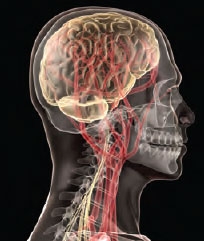Brain Responds to Marijuana Cues in Familiar Manner

Cravings triggered by marijuana-related cues, such as a marijuana pipe, are associated with a pattern of brain activity similar to that which accompanies cravings for other drugs, say NIDA-funded researchers at the University of New Mexico. Dr. Francesca M. Filbey and colleagues obtained functional magnetic resonance images of reward areas in the brains of 38 regular marijuana smokers while the participants handled either a marijuana pipe or a neutral object, in this case a pencil, after going 3 days without the drug. While handling the pipe, the study participants reported more craving for marijuana, and the brain images revealed greater activity in the ventral tegmental area, nucleus accumbens, prefrontal cortex, and other reward- and motivation-related areas. In other studies, activation of these neural pathways has been associated with cravings for alcohol, nicotine, and cocaine; the intensity of activation is considered an indicator of the severity of dependence on those drugs.
As with other addictive drugs, the extent of the cue-induced activity in the brains of the marijuana smokers correlated with the number of problems that the participants reported, such as family troubles, work missed, or jobs lost. According to the researchers, the findings suggest that medication development strategies targeting these areas of the brain may ultimately prove effective against craving and addiction to marijuana, as well as other drugs.
Proceedings of the National Academy of Sciences 106(31):13016–13021, 2009. [Full Text (PDF, 515KB)]


